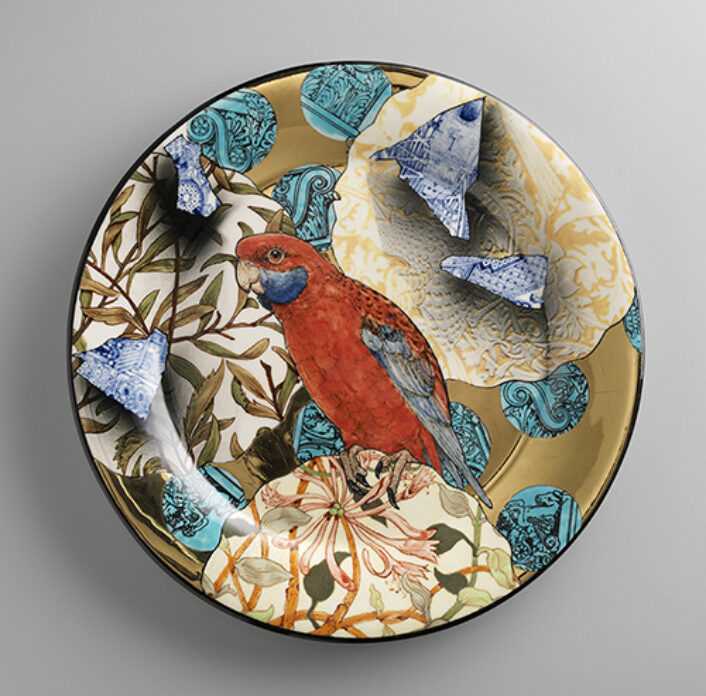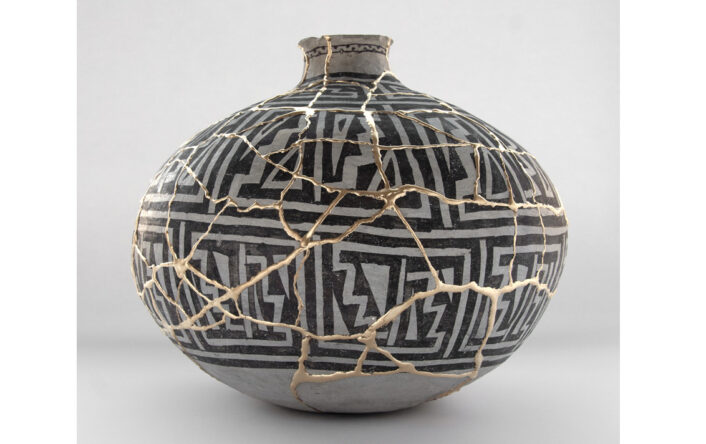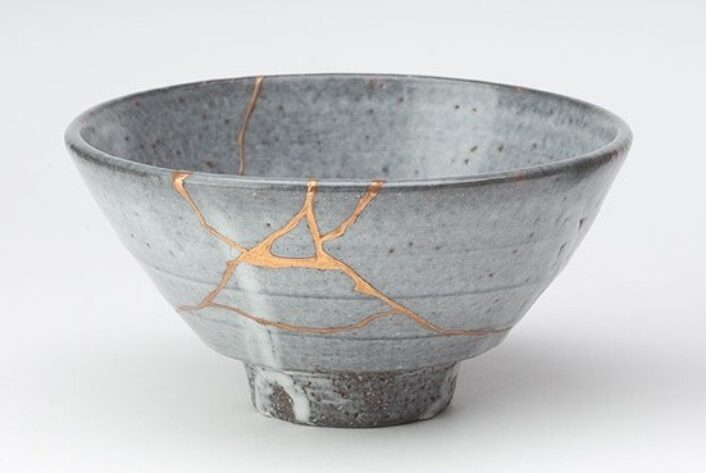Sarkis explaining the collection he designed for Bernardaud.
Design
Bernardaud’s Kintsugi collection
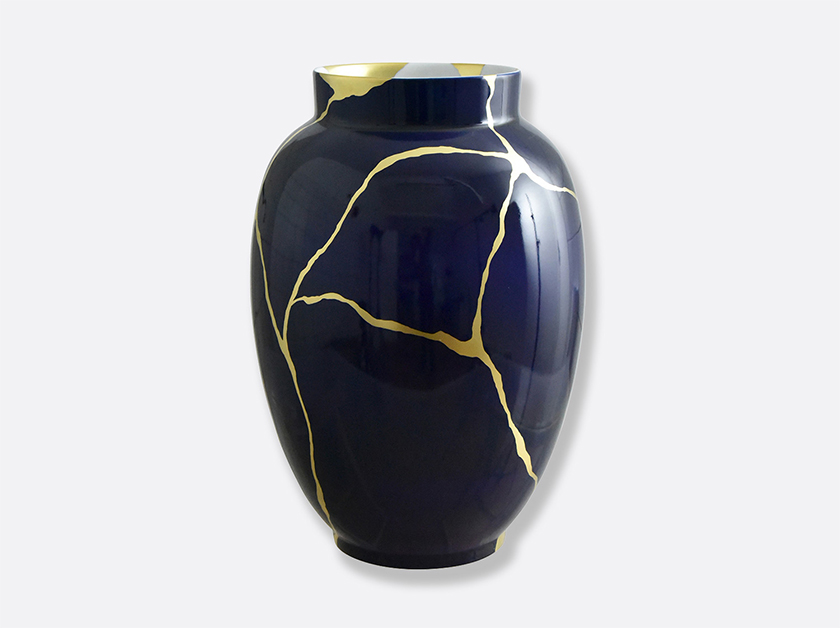
Cobalt blue large vase from a limited edition of 36 (the artist’s favorite number).
Image courtesy of: Bernardaud
Bernardaud is known throughout the world as one of the finest porcelain makers. The company was started in 1863 in Limoges, France, a region full of all the environmental materials necessary to make premier porcelain. The region around Limoges possesses fresh water, forests, and kaolin. The newly built railroad was also very helpful in that they were able to ship their product and allow for increased production.
Years earlier, in 1768, a local woman discovered a malleable white clay that, it turned out, was helpful for bleaching grease spots from her linens. Fast forward and this was identified as kaolin…one of the four ingredients necessary to make porcelain. Almost a century later, two industrialists from Limoges opened a porcelain factory in order to meet the increased demands for dinnerware items. One apprentice stood out from the rest, Leonard Bernardaud; twenty years later he was promoted to head of sales and made a partner by the two original partners.

Kintsugi Sarkis, Large Coupe, name in Limoges, France.
Image courtesy of: Bernardaud
Leonard Bernardaud increased production capacity and opened up new markets, mainly the United States. His sons, Jacques and Michel, succeeded him and expanded the company’s collection. The pair began collaborating with artists as a way to grow the collection. In 1949, the brothers presented the first tunnel kiln to France, this machine operated 24 hours a day and allowed for increased production. In 1954, the kiln began using natural gas which was a “clean energy” that allowed for constant heat and an improved firing process. The pieces that were produced via this process were without defects and sturdier. Now, the company was able to produce on an “industrial scale”… however, the high standards and artisan techniques remained the primary focus.
Pierre Bernardaud took over management in 1962, and in 1979 he reorganized the business all the while acquiring several nearby porcelain production facilities. The following year, he installed an isostatic press; this allowed for increased output and quality. Pierre was also successful in commissioning Raymond Loewy to design the company’s first contemporary dinnerware service set.

The Kintsugi-Sarkis Dinnerware Collection mixes together lacquer and 24k- gold.
Photo by Lily Rose courtesy of: The Pink Daisy
In 1979, Pierre Bernardaud invited his son Michel to join the company and to help grow the brand’s worldwide presence. Fifteen years later, Michel took over the reins and in the years since, he has continued to modernize the company while ensuring that rare techniques such as incrustation be used only for special orders.
One of the last porcelain companies to be owned by the founding family, Michel has made it his mission to continue the philosophy set forth by his predecessors: preserve valuable technical skills, inspire innovation, and encourage creativity.
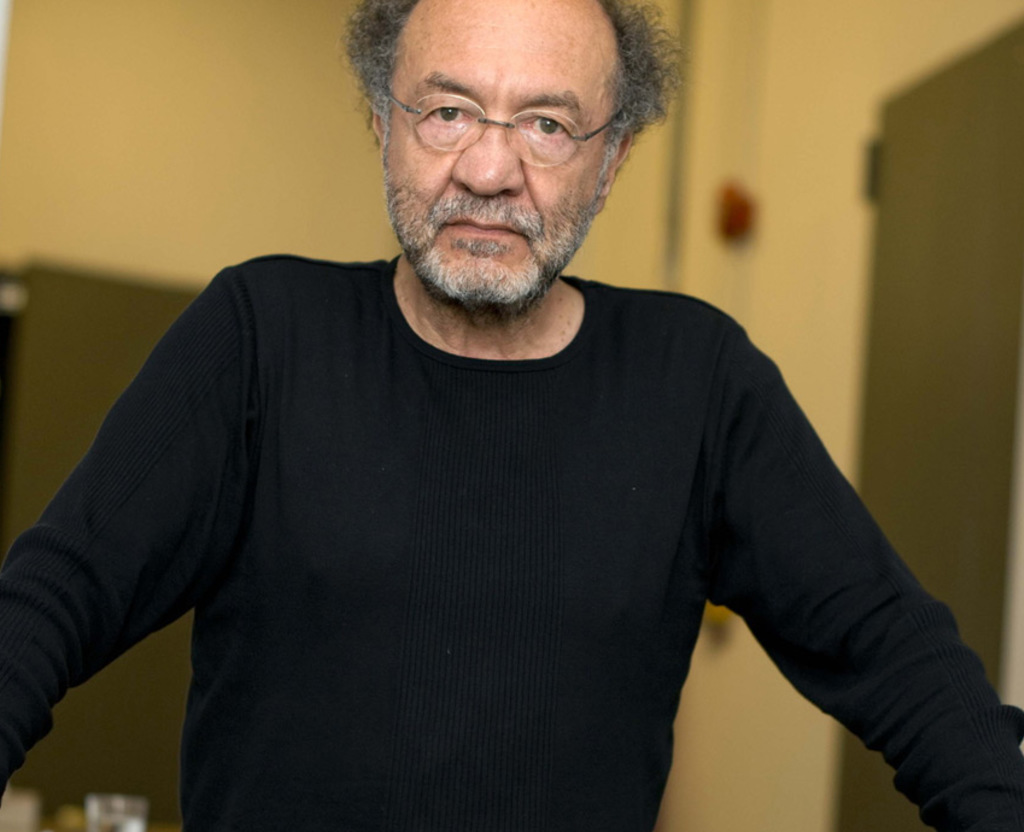
Sarkis was born in Istanbul, but he has lived in Paris since 1964.
Image courtesy of: Bernardaud
One of Bernardaud’s finest collections, in our opinion, is the Kintsugi-Sarkis series. Sarkis is a French artist who was approached by the company to design a unique assemblage. Drawn to 17th-century Korea, the artist wanted to inspire a collection that highlights the value of something completely new albeit with further repairs.
The visible repairs on the plates are in fact, the art. The stress of the repairs becomes, in turn, their unique beauty. Using only one additional material, glue, Sarkis highlights the “put together pieces,” with a gold material that emphasizes its unique and original beauty.
Sakris was quoted as saying, “My work is always related to memory. Everything that I have experienced in my life is in it.” For almost his entire professional career, he has imagined scenes made up from stories inspired by memories specific to his personal memories. His body of work is made up of different forms of media and materials, and he approaches objects from different viewpoints and cultures. On Bernardaud’s website it says, “This has given his body of work a unique poetic dimension that reveals a profound humanism and a great familiarity with world history.” Yes indeed this is true… and the renowned porcelain house is all the more majestic with the Kintsugi-Sarkis collection in its esteemed repertoire.
